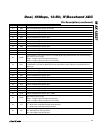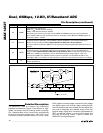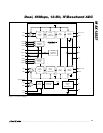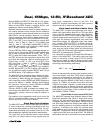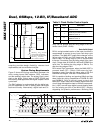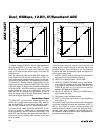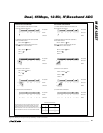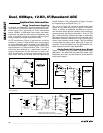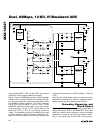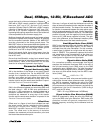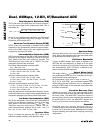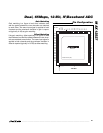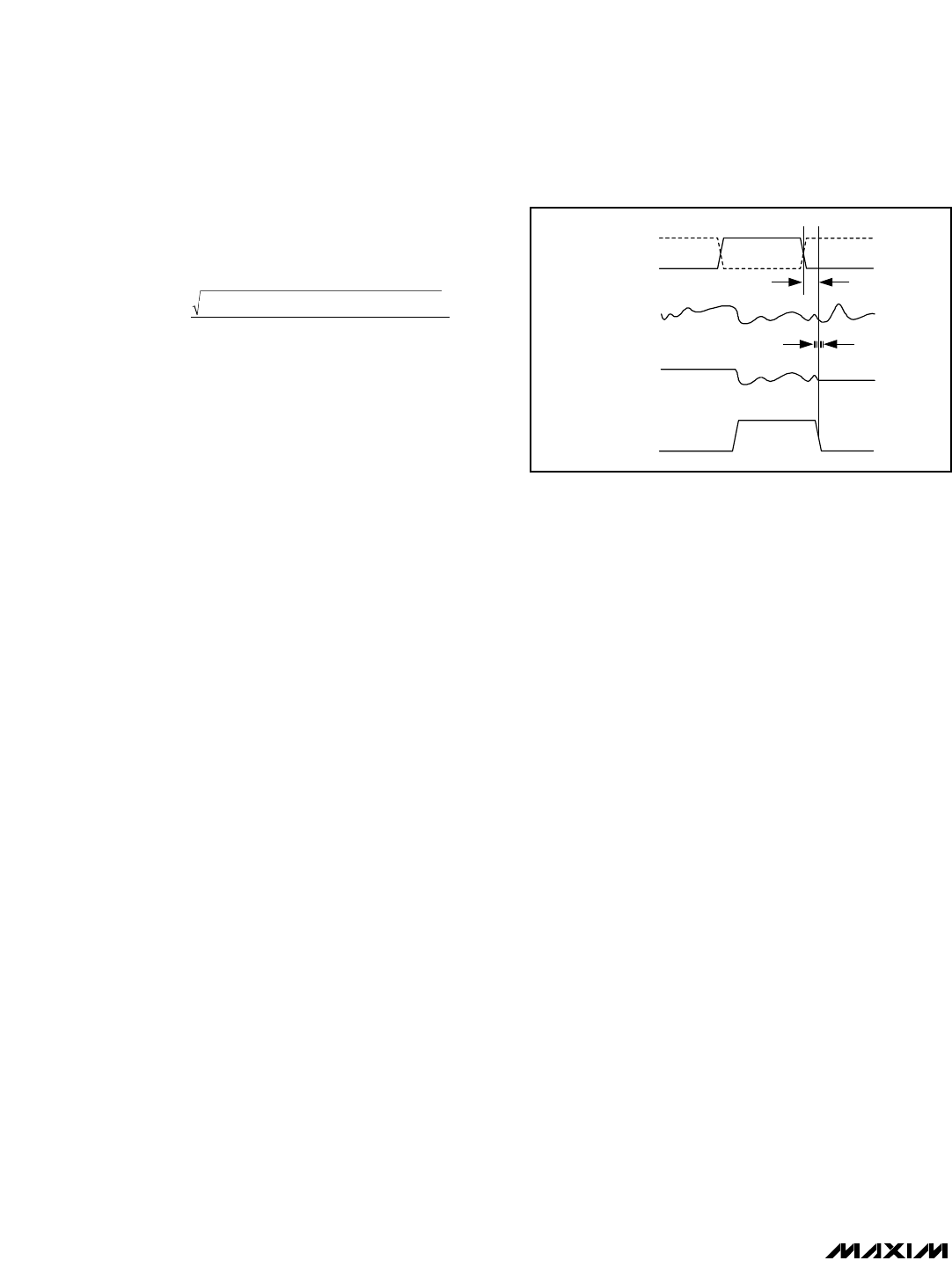
MAX12527
Total Harmonic Distortion (THD)
THD is the ratio of the RMS sum of the first six harmon-
ics of the input signal to the fundamental itself. This is
expressed as:
where V
1
is the fundamental amplitude, and V
2
through
V
7
are the amplitudes of the 2nd- through 7th-order
harmonics (HD2 through HD7).
Spurious-Free Dynamic Range (SFDR)
SFDR is the ratio expressed in decibels of the RMS
amplitude of the fundamental (maximum signal compo-
nent) to the RMS value of the next largest spurious
component, excluding DC offset.
Intermodulation Distortion (IMD)
IMD is the total power of the IM2 to IM5 intermodulation
products to the Nyquist frequency relative to the total
input power of the two input tones f
IN1
and f
IN2
. The
individual input tone levels are at -7dBFS. The inter-
modulation products are as follows:
2nd-Order Intermodulation products (IM2):
f
IN1
= f
IN2
, f
IN2
- f
IN1
3rd-Order Intermodulation products (IM3):
2 x f
IN1
- f
IN2
, 2 x f
IN2
- f
IN1
, 2 x f
IN1
+ f
IN2
,
2 x f
IN2
+ f
IN1
4th-Order Intermodulation products (IM4):
3 x f
IN1
- f
IN2
, 3 x f
IN2
- f
IN1
, 3 x f
IN1
+ f
IN2
,
3 x f
IN2
+ f
IN1
, 2 x f
IN1
- 2 x f
IN2
, 2 x f
IN1
+ 2 x f
IN2
,
2 x f
IN2
- 2 x f
IN1
5th-Order Intermodulation products (IM5):
3 x f
IN1
- 2 x f
IN2
, 3 x f
IN2
- 2 x f
IN1
, 3 x f
IN1
+ 2 x f
IN2
,
3 x f
IN2
+ 2 x f
IN1
, 4 x f
IN1
- f
IN2
, 4 x f
IN2
- f
IN1
,
4 x f
IN1
+ f
IN2
, 4 x f
IN2
+ f
IN1
Note that the two-tone intermodulation distortion is mea-
sured with respect to a single-carrier amplitude and not
the peak-to-average input power of both input tones.
3rd-Order Intermodulation (IM3)
IM3 is the total power of the 3rd-order intermodulation
product to the Nyquist frequency relative to the total
input power of the two input tones f
IN1
and f
IN2
. The
individual input tone levels are at -7dBFS. The 3rd-
order intermodulation products are 2 x f
IN1
- f
IN2
, 2 x
f
IN2
- f
IN1
, 2 x f
IN1
+ f
IN2
, 2 x f
IN2
+ f
IN1
.
Aperture Jitter
Figure 14 shows the aperture jitter (t
AJ
), which is the
sample-to-sample variation in the aperture delay.
Aperture Delay
Aperture delay (t
AD
) is the time defined between the
rising edge of the sampling clock and the instant when
an actual sample is taken (Figure 14).
Full-Power Bandwidth
A large -0.2dBFS analog input signal is applied to an
ADC and the input frequency is swept up to the point
where the amplitude of the digitized conversion result
has decreased by -3dB. This point is defined as full-
power input bandwidth frequency.
Output Noise (n
OUT
)
The output noise (n
OUT
) parameter is similar to thermal
plus quantization noise and is an indication of the con-
verter’s overall noise performance.
No fundamental input tone is used to test for n
OUT
.
IN_P, IN_N, and COM_ are connected together and
1024k data points are collected. n
OUT
is computed by
taking the RMS value of the collected data points after
the mean is removed.
Overdrive Recovery Time
Overdrive recovery time is the time required for the
ADC to recover from an input transient that exceeds the
full-scale limits. The MAX12527 specifies overdrive
recovery time using an input transient that exceeds the
full-scale limits by ±10%. The MAX12527 requires one
clock cycle to recover from the overdrive condition.
Crosstalk
Coupling onto one channel being driven by a
(-0.5dBFS) signal when the adjacent interfering channel
is driven by a full-scale signal. Measurement includes
all spurs resulting from both direct coupling and mixing
components.
THD
VVVVVV
V
log
=×
+++++
20
2
2
3
2
4
2
5
2
6
2
7
2
1
Dual, 65Msps, 12-Bit, IF/Baseband ADC
26 ______________________________________________________________________________________
t
AD
t
AJ
T/H
TRACKHOLD HOLD
CLKN
CLKP
ANALOG
INPUT
SAMPLED
DATA
Figure 14. T/H Aperture Timing



